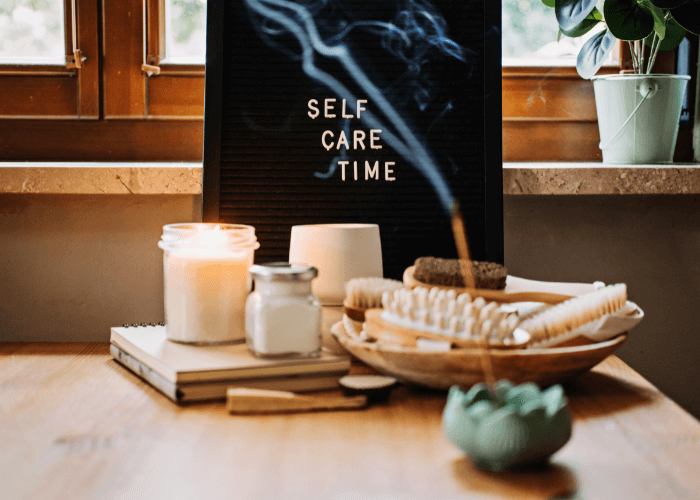What is Emotional Regulation?
Emotional regulation is the ability to be able to control your own emotional state. Such regulation can include focusing on being calm and happy, rethinking the situation to reduce anxiety, or overcoming the sense of fear or sadness.
Regulation is often about reducing how intense some emotions are or increasing that intensity. Down-regulation and up-regulation are terms for ways to control your emotions. The first one is for reducing negative ones, and the latter is to increase anxiety or happiness when needed.
Psychologists say that emotion regulation happens in two phases – before feeling an emotion and after. The first is antecedent-focused emotion regulation, and the second is response-focused emotion regulation.
Today, we are diving deeper into the meaning of emotional regulation and the ways to enhance that superpower in order to improve your overall quality of life.
Why Is Emotional Regulation Important?
Adults are expected to manage their emotions in a socially acceptable way, without the outbursts and tantrums that children usually have. On the other hand, failure to meet those expectations usually has two mutually connected consequences.
First, your social circle shrinks, and your intercommunication patterns begin to suffer. And second, you begin to feel lonely, distant, irritated and misunderstood.
Sometimes when emotional control is poor, we tend to say and do things we regret later. If learning how to regulate emotions happens sooner, the life and relationships of a person can benefit massively.
So, what are the emotional self-regulation habits you need to integrate into your lifestyle and philosophy?
Ways to Control Your Emotions
The two main ways to reach emotional control are changing how you think about something or suppressing it. Unfortunately, the latter can have a negative effect.
Other ways are to change the situation that influenced emotional experiences or shift your attention. The hardest one is to accept your emotions and simply move on.
Emotional Regulation Exercises
If you are looking forward to an emotional regulation activity, then we have a couple of suggestions down below.
Breathing Exercises
There are three main breathing exercises for good emotional regulation:
- You can do breath counting, sitting calmly, counting to 5 on an inhale, and counting to 7 on an exhale. This makes you focus on breathing and not on intrusive thoughts.
- Breath shifting is another way to help yourself out. You just need to put one hand on your chest and the other on your abdomen. Notice how they rise and fall when you breathe. This gives you a good focus on both areas and calms you down.
- Breath relaxation is simply taking deep breaths with your eyes closed until you feel that all the stress is going away, and you can feel a bit more relaxed.
You can try out all three of them and choose the one that works best for you and your temperament.
Reaching Emotional Catharsis
A great effective way to deal with emotional dysregulation disorder is to go through an emotional catharsis. This way, you will let go of suppressed emotions and reach a good mental balance.
To reach such a blissful state, you need to observe your emotions without trying to change them. Evaluate the experience that caused your emotions and acknowledge that emotions are just states that pass. Don’t identify with them; instead, treat them as a river flowing through you.
You can name or write these emotions down on a piece of paper and talk them out with friends, relatives, or a therapist.
Mindfulness and Self-awareness
Mindfulness is one of those emotional regulation skills that can help you live in the present by acknowledging your feelings, mind, and body.
Such a skill can help you look at your feelings and thoughts from a neutral point of view.
Exercises for mindfulness are implementation and acknowledgment exercises. The first ones include self-expression, empathetic listening, or thinking in a non-judgmental way. The latter are naming thoughts and emotions and observing them.
Mindfulness is also a synonym for self-awareness which is again about recognizing our emotions and how they affect us.
Again, thought and emotion naming here is a good exercise, and you can even create a chart with columns titles like:
- What am I feeling right now?
- What caused it?
- How did I respond to it?
- What emotions did I feel at that time?
Once you have the answer, you can have the strategy for managing what you feel.
Which Are the Hardest Emotions to Control?
The most challenging emotions to control are disappointment, anger, and resentment. Unfortunately, people tend to suppress such feelings, and this often leads to mental health issues like depression or even borderline personality disorder.
When not addressing such emotions correctly, you can overreact and feel less satisfaction in your life and relationships.
Sometimes controlling your emotions can be difficult thanks to beliefs that negative emotions are destructive and uncontrollable. For example, uncertainty might make emotions run wild, and if you don’t communicate clearly with someone, you might start feeling hopeless.
Emotional regulation can be tough to harness and manage, especially in this day and age. Social media is a massive trigger for everyone that has a hard time being too self-aware. The perfect life portrayed online is why so many young people feel like they are missing out on something.
Always find a friend or therapist that you feel comfortable speaking to; when a traumatic experience arises, don’t wait for the emotions to go away. They never do by putting a lid on them. Instead, let them out and let them go.
What Is Emotional Regulation Disorder?
An emotional regulation disorder is a condition in which the ability to manage and regulate a person’s emotions is not present. Emotional dysregulation, or ED, is a term that psychologists use for weakly governed emotional responses.
The most common symptoms of the emotional regulation disorder are:
- Sudden anger outbursts to someone who hasn’t done any harm or simply passive-aggressive behavior;
- Suicidal thoughts and self-destructing behavior;
- Symptoms like chronic pain not caused by a medical condition and unexplained by specialists;
- Having difficulty in building social relationships in professional and personal fields;
- Inability to focus on work since the mind is occupied with negative emotions;
- Poor self-control, hypersensitivity, etc.
Usually, emotion regulation disorder is accompanied by other mental health conditions like mood polarities and depression.
The best way to treat emotion regulation disorder is through Dialectical Behavior Therapy or DBT. This condition can be treated if the person takes care of the issue as soon as possible and follows consistently long-term treatment.
Another way to start your recovery journey is to build a well-being routine with a chosen mental health app, a podcast, or a tailor-made well-being program.













